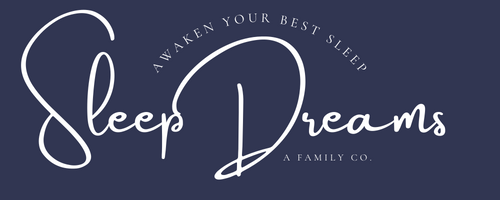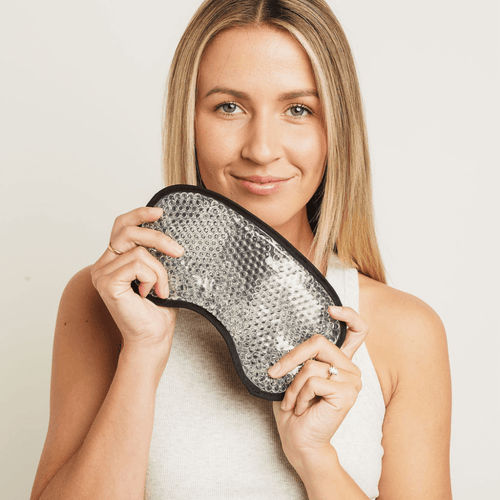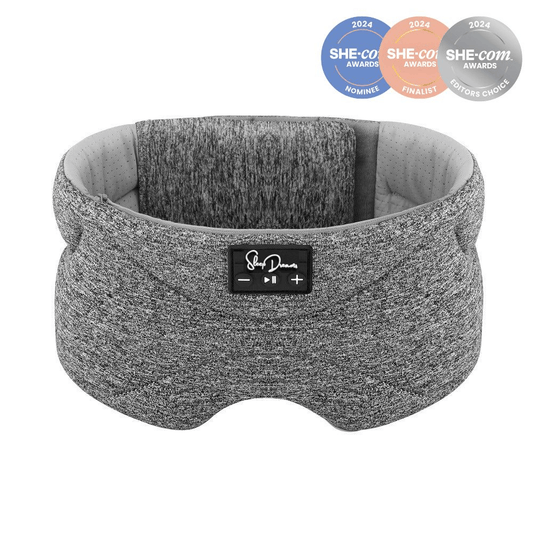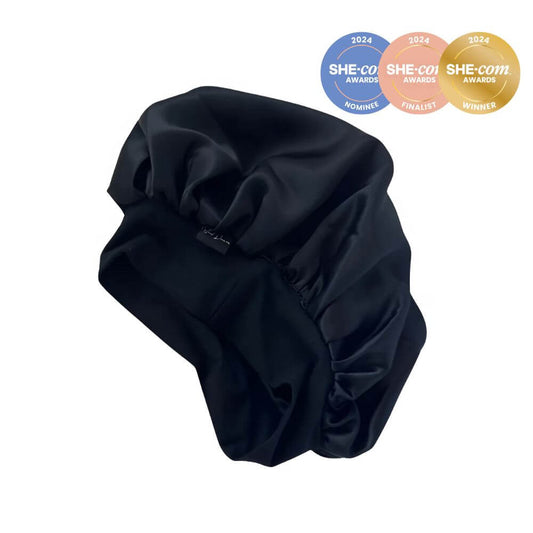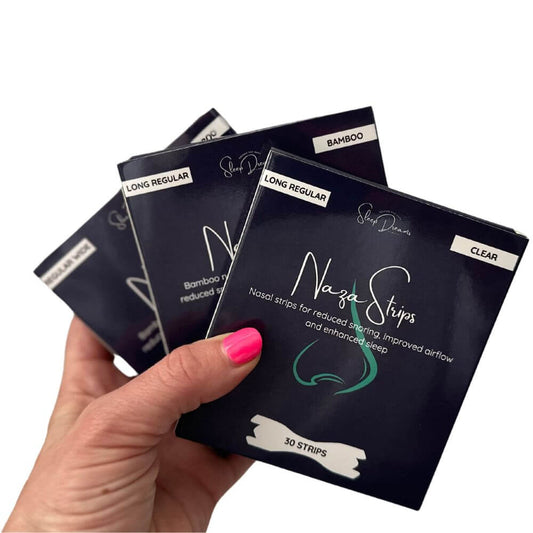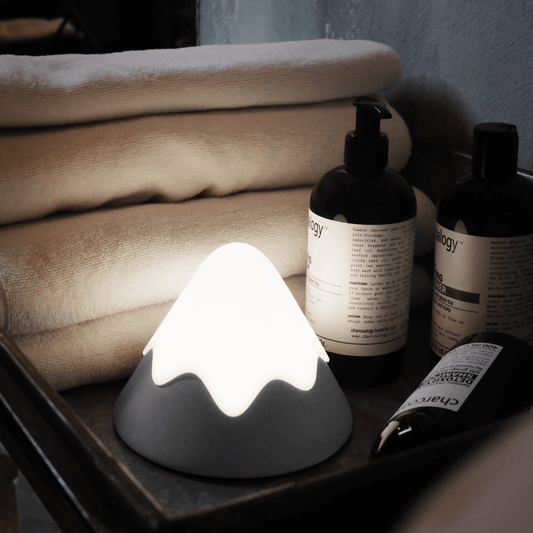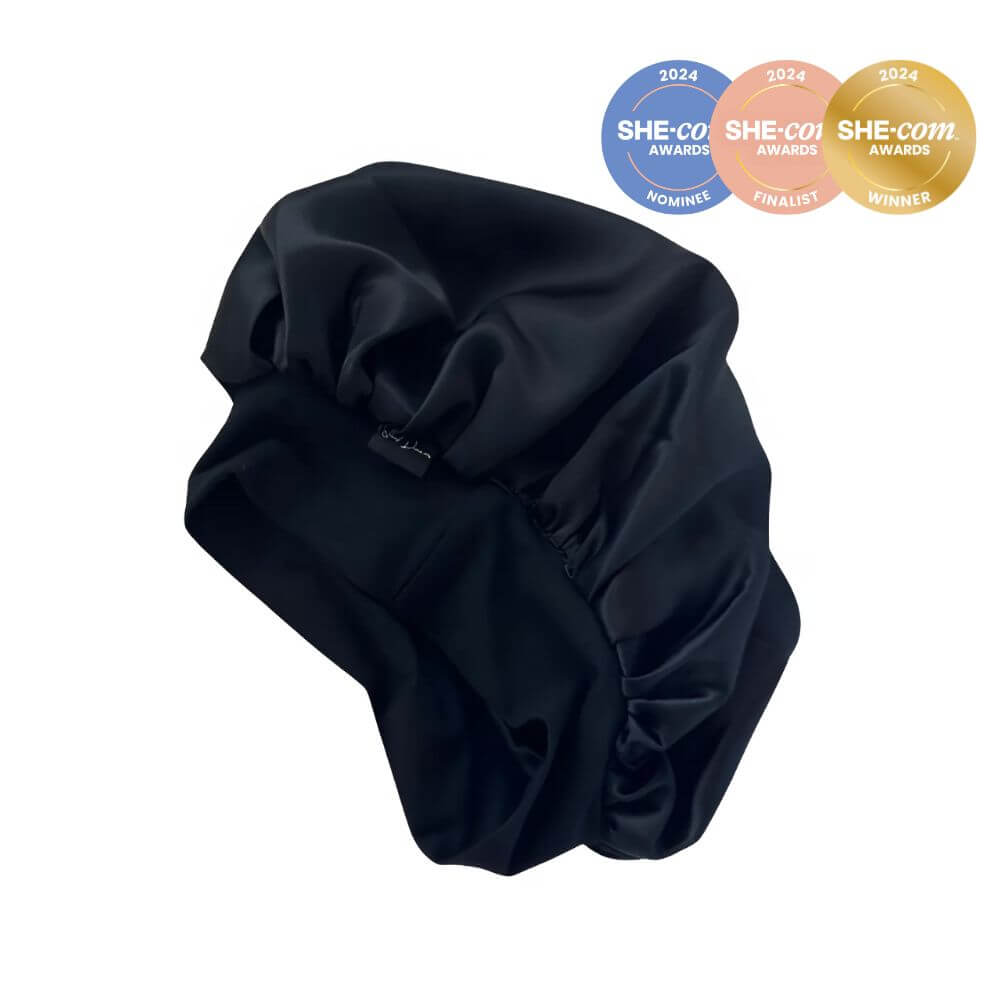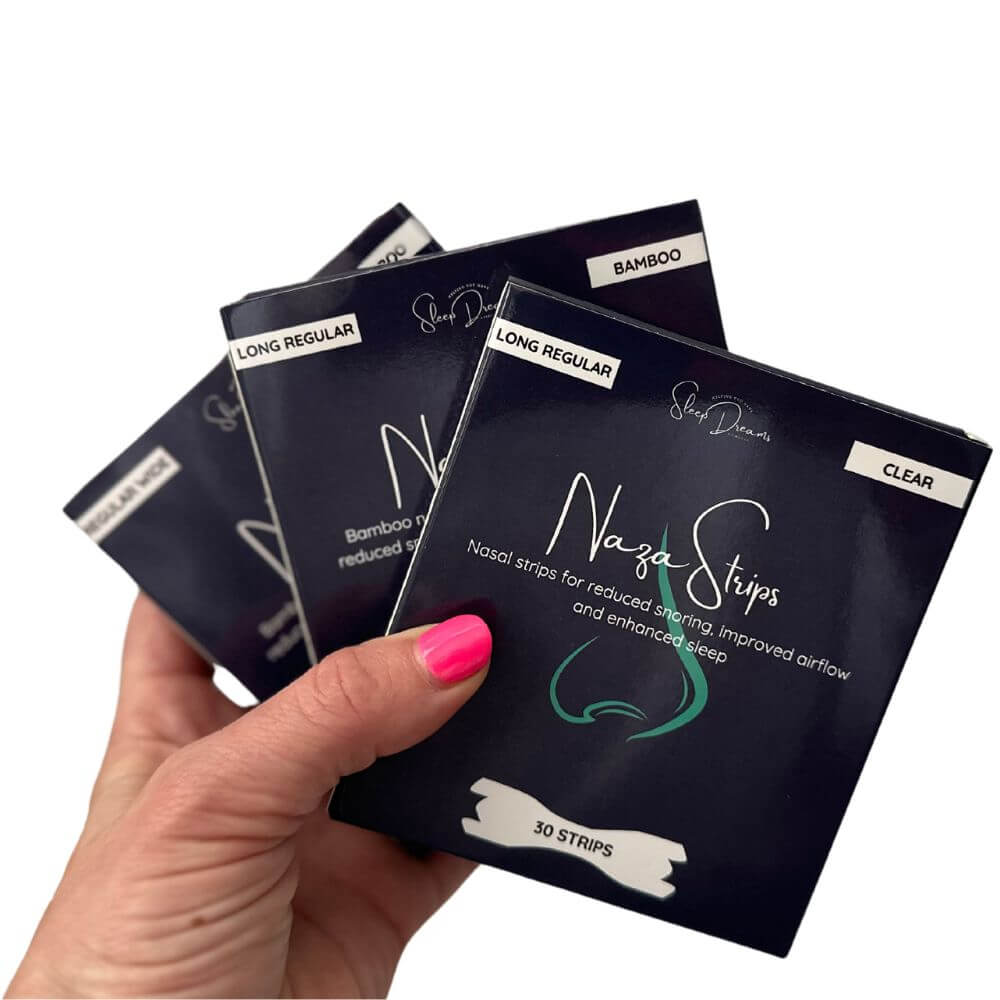Sleep headphones are a specialised type of headphones designed specifically for use during sleep. Unlike traditional headphones, they are crafted with comfort and relaxation in mind, ensuring that they can be worn throughout the night without causing discomfort or disturbance.
The core purpose of sleep headphones is to provide a soothing audio experience that can aid in falling asleep faster and achieving a deeper, more restorative sleep. They are particularly beneficial for those who struggle with insomnia, noisy environments, or find it challenging to wind down at the end of the day.

Sleep headphones come in various forms, from slim, flat speakers embedded in soft headbands to ergonomically designed masks that offer additional features like light blocking. This versatility means they cater not just to the needs of different sleepers but also to a variety of preferences and comfort requirements.
The benefits of incorporating sleep headphones into your nightly routine are numerous:
- Enhanced Sleep Quality: By allowing you to listen to calming sounds, white noise, or your favourite relaxing music, sleep headphones can significantly improve the quality of your sleep.
- Noise Isolation: For those living in noisy environments, sleep headphones can act as a barrier to external sounds, ensuring a more peaceful sleep setting.
- Comfort: Specially designed to be worn in bed, these headphones offer superior comfort compared to regular headphones or earbuds, which can be intrusive or uncomfortable when lying down.
- Sleep Induction: Listening to specific audio tracks designed to induce sleep can be more effective when delivered directly to your ears in a comfortable, non-intrusive manner.
- Flexibility and Convenience: Whether you prefer guided meditations, ASMR, nature sounds, or complete silence, sleep headphones provide the flexibility to personalise your sleep experience.
In the following sections of this guide, we'll delve into each key feature of sleep headphones in detail. Our aim is to equip you with a thorough understanding of every aspect, from the technicalities of speaker location and width to the subtleties of material choice and comfort considerations. We will explore additional functionalities like temperature control options, connectivity types, and battery life, ensuring you have a comprehensive view of what to look for in the ideal pair of sleep headphones.
By dissecting each feature, we provide insights into how they contribute to overall sleep quality and comfort. This detailed examination will not only educate you on the nuances of sleep headphone technology but also assist you in making an informed decision tailored to your personal needs and preferences. Whether you are a first-time buyer or looking to upgrade your current pair, this guide aims to be your go-to resource for all things related to sleep headphones.
Summary
To assist you in navigating through the wealth of information and to help you make an informed choice, we've distilled the most crucial aspects into a concise summary. The table below encapsulates the key considerations for selecting sleep headphones that best suit your needs.
| Category | Key Considerations |
|---|---|
| Speaker Location & Width |
- Adjustable positioning for optimal comfort and sound delivery - Preference for thin speakers (approx. 4mm) |
| Material & Breathability |
- Use of soft, breathable materials like foam, modal, cotton, and polyester-spandex blends - Consideration of material thickness for comfort and heat management |
| Strap Comfort |
- Avoiding hard components like clasps - Secure fit with comfortable materials - Checking reviews for real-world feedback |
| Eye Pressure |
- Option for padded eye sockets or soft materials - Consider personal sensitivity and comfort preferences |
| Light Blocking |
- Effective design features like nose covers - Importance for shift workers and daytime sleepers |
| Connectivity |
- Options: Wired, Bluetooth®, Built-in sounds - Consider battery life, mobility, and device compatibility |
| Control Panel Accessibility |
- Placement considerations based on sleeping position and ease of use - Side vs. front placement |
| Maintenance & Cleaning |
- Removability of electronic components - Washability of materials - Impact on longevity and hygiene |
| Status Lights |
- Impact on sleep environment and companions - Design options: No lights, auto-off, continuous |
| Battery Life |
- Minimum 9 hours for uninterrupted sleep support - Check specifications and reviews |
Our winner: SleepSoftly™ Deluxe Bluetooth Sleep Headphones
Speaker Location, Adjustability, and Width
Speaker Location and Adjustability
The location and adjustability of speakers in sleep headphones are essential for ensuring both comfort and optimal sound delivery. The primary function of adjustable speakers is to enable you to precisely align them over your ears. This adjustability is crucial because if the speakers are not correctly positioned, you may not fully benefit from the sound they produce, whether it's soothing music, white noise, or guided meditations.
Adjustable speakers cater to the unique shape and size of each individual's ears. This feature is vital for a personalised fit, accommodating different ear positions and head shapes. Moreover, the ability to adjust the speakers ensures they remain in the ideal position throughout the night, maintaining effective sound delivery even if you move or shift in your sleep.
Ensuring the speakers are directly over your ears is not just about getting the best sound quality; it's also about reducing the risk of discomfort or pressure points. Misaligned speakers can cause discomfort, disrupting your sleep, which is counterproductive to the purpose of sleep headphones. Therefore, the capacity to adjust the speakers to sit comfortably and correctly over your ears is a key aspect to consider when choosing the right sleep headphones.
Speaker Width: The Superiority of Thin Speakers
When considering the width of speakers in sleep headphones, the clear advantage lies with thinner speakers. Thin speakers, approximately 4mm in width — roughly the thickness of a standard mouse mat — are highly recommended for their superior comfort. The slim design of these speakers plays a pivotal role in enhancing the overall sleep experience, particularly for those who sleep on their sides. Their minimalistic profile is barely noticeable, ensuring that they don't exert undue pressure on the ears or head, which is a common concern with bulkier options.
This sleek design of thin speakers offers a significant comfort advantage. The reduced bulk means that the speakers are less likely to cause discomfort or disrupt sleep, even when lying directly on them. For individuals who are sensitive to pressure while sleeping or who frequently change positions, this can be a crucial factor in achieving uninterrupted and restful sleep.
On the contrary, thicker speakers, up to 10mm, may be associated with lower-end models. While these might be more affordable, the increased thickness can be a drawback in terms of comfort. The bulkier build can lead to a feeling of pressure against the ear, especially in side-sleeping positions, which may lead to discomfort over time. Although they can still provide adequate sound quality, the trade-off in comfort is an important consideration, especially for a device meant to be worn throughout the night.
Material and Breathability: The Ideal Fabrics for Sleep Headphones
Selecting the right material for sleep headphones is essential for ensuring both skin comfort and breathability. Since these devices are worn throughout the night, the material in contact with your skin must be gentle, breathable, and hypoallergenic to prevent any form of irritation and to maintain a comfortable temperature.
Key Materials in Sleep Headphones:
-
Foam Padding: Foam is a common material used for padding in sleep headphones. It's chosen for its softness and ability to conform to the head and ears, providing comfort without excessive pressure. The breathability of the foam is also key, as it prevents overheating and ensures comfort during prolonged use.
-
Modal Fabric and Blends: Modal fabric, primarily made from beech tree fibers, is a favoured choice for parts of sleep headphones that contact the face. Its inherent softness and lightweight nature make it comfortable against the skin, while its excellent moisture-absorbing properties help in reducing sweat accumulation. Additionally, modal is often blended with other materials like cotton for enhanced softness, or with polyester and spandex for increased durability and stretchability. These blends allow for a customised fabric that meets the specific demands of sleep headphones, ensuring both comfort and longevity.
-
Polyester and Spandex Blend: The combination of polyester and spandex is sometimes used for the inner linings of sleep headphones, particularly due to its blend of durability and comfort. Spandex, known for its elasticity, contributes a soft, cooling effect that is reminiscent of silk. This makes it a particularly good option for the parts of the headphones in contact with the skin. The cooling sensation is a desirable feature for sleepwear, as it helps maintain a comfortable temperature throughout the night. Additionally, the durability of this blend makes it well-suited for frequent use and regular cleaning, essential for maintaining hygiene in products used for sleep. The robust nature of polyester, combined with the flexibility and comfort of spandex, creates a material that not only feels pleasant against the skin but also stands up to the demands of nightly use.
-
Cotton: Cotton is another excellent material for sleep headphones, prized for its natural softness and breathability. It's especially good for those with sensitive skin due to its hypoallergenic nature. Cotton also excels in absorbing moisture, which can help in reducing sweat and maintaining a comfortable temperature throughout the night. This is the most common material used.
- Material Thickness: The thickness of these materials is a vital aspect to consider. It influences the overall comfort and effectiveness in heat management. The ideal thickness balances sufficient cushioning for comfort, especially during extended wear, without leading to overheating. Each material, whether it's foam, modal, a polyester-spandex blend, or cotton, has its optimal thickness that combines comfort with practicality for a restful night's sleep.
Silk: A Less Common Choice for Sleep Headphones
Silk, though renowned for its luxurious feel and natural cooling properties, is less frequently used in the manufacture of sleep headphones. One of the primary reasons for its limited use in this context is the need for sleep headphones to maintain shape and securely hold electronics. Silk, with its delicate and fluid nature, is less adept at providing the necessary structure and support for these components.
Additionally, silk is not the ideal material for padding purposes. Its thinness and lack of cushioning properties make it less effective in offering the comfort and protection needed around the electronic parts of sleep headphones. Moreover, the requirement for headphones to be durable and retain their form over time further diminishes the practicality of using silk, as it may not withstand the regular wear and stress associated with nightly use.
The Balance of Comfort and Practicality
The choice of material for sleep headphones is a balance between comfort and practicality. Materials like modal, cotton, and polyester-spandex blends are ideal due to their softness, breathability, and durability. They ensure that the headphones remain comfortable and hygienic over time, enhancing the overall quality of sleep.
Strap Comfort in Sleep Headphones
The comfort of the straps in sleep headphones is an essential aspect that can significantly impact the overall experience of wearing them throughout the night. To ensure maximum comfort, especially while lying down, several key factors need to be considered in the design and choice of straps.
Avoiding Clasps and Hard Components
One of the primary considerations is to avoid hard components like clasps in the strap design. Clasps can create pressure points and cause discomfort, especially for side sleepers or those who move a lot during sleep. They can press against the head or get entangled in hair, leading to disturbances in sleep.
Securing the Fit Without Discomfort
The choice of fastening mechanism is crucial. While velcro is a common option, it's important to ensure that the velcro used is of high quality and designed in a way that it doesn't catch hair or scratch the skin. The velcro should be light yet secure, ensuring that the headphones stay in place throughout the night without slipping off. However, it's also vital to ensure that the velcro doesn't create discomfort, especially for those who may sleep with their head against the strap.
Material and Thickness of the Straps
The material of the straps plays a significant role in comfort. It should be soft and breathable to prevent any irritation to the skin and to allow heat to escape, reducing the likelihood of sweating. The thickness of the straps is another important factor; they should be thin enough to not feel bulky or like you're lying on top of something, yet sturdy enough to hold the headphones in place comfortably.
Checking Reviews for Real-World Feedback
An effective way to gauge the comfort and practicality of the straps is to look at user reviews. These can provide insights into whether users have experienced issues with the headphones slipping off during the night, or any discomfort related to the strap design. Reviews can highlight any common problems and help you make a more informed decision.
In conclusion, when choosing sleep headphones, the comfort and design of the straps are as important as the quality of the sound or the materials used. Straps that are soft, comfortably secure, and free from hard or irritating components can make a significant difference in ensuring a restful night's sleep with your sleep headphones.
Eye Pressure Considerations in Sleep Headphones
When designing or choosing sleep headphones, special attention must be paid to eye pressure, as this can significantly affect comfort and the overall sleep experience. The design elements of sleep headphones can vary greatly, and these variations can influence how the headphones feel in terms of pressure around the eyes.
Padded Eye Sockets Design
Some sleep headphones come with padded eye sockets. This feature ensures that the mask part of the headphones doesn't directly touch the eyes, providing a buffer space. This design is particularly favoured by individuals who might feel discomfort with direct contact over the eyes, such as those with sensitive eyes or those who wear false eyelashes, as it prevents any pressure or disturbance on the lashes.
However, this added padding can make the mask thicker and stand further away from the face, which some users might find less comfortable. The increased bulk could potentially feel heavy or less form-fitting, depending on the user's preference and facial structure.
Soft, Delicate Material Option
Alternatively, other sleep headphones opt for a design where a soft, delicate material lightly covers the eyes. This style provides minimal pressure and feels less intrusive, which can be more comfortable for those who prefer a lighter, more seamless feel. The key here is to find a material that is gentle and soothing against the skin while still providing the necessary darkness for sleep.
Quality and Design Consideration
With any higher-quality sleep headphones, meticulous attention is usually given to how the product impacts eye pressure. Manufacturers often conduct extensive testing and research to strike the right balance between protection, comfort, and functionality.
Personal Preference and Trial
When it comes to preferences around eye pressure and comfort, it often comes down to personal trial and error. What works wonderfully for one person may be less ideal for another. It's recommended to consider your own specific needs, such as sensitivity around the eyes, use of eye cosmetics like false eyelashes, or simply your comfort preference. Trying different styles or reading through detailed user reviews can provide valuable insights into how different designs might feel in practice.
Light Blocking Capability in Sleep Headphones
The ability of sleep headphones to block out light is a crucial feature, particularly for individuals who need to sleep in environments with varying light levels, such as shift workers or parents trying to catch some sleep during the daytime. Effective light blocking can significantly enhance sleep quality by promoting the production of melatonin, a hormone that regulates sleep-wake cycles.
Design Features for Optimal Light Blocking
-
Nose Cover Design: A key design feature in many sleep headphones is the inclusion of a nose cover or a contoured area around the nose. This design is essential because the region around the nose is often where light tends to creep in, especially if the mask shifts during sleep. A well-designed nose cover ensures a snug fit, conforming to the contours of your face, and effectively blocks out any intrusive light that might seep in through gaps.
-
Full Coverage Material: The material and shape of the sleep headphones play a vital role in light blocking. Materials that are opaque and have a broader coverage area, extending beyond the immediate eye region, are more effective in creating a dark, restful environment. The material should be thick enough to block light but still comfortable and breathable.
Importance for Shift Workers and Daytime Sleepers
For shift workers, parents of young children, or anyone trying to sleep during the day, the ability to create a dark environment is particularly important. Exposure to light can disrupt the body's natural circadian rhythm, making it more difficult to fall and stay asleep. By effectively blocking out light, sleep headphones can help in maintaining a regular sleep pattern, which is crucial for overall health and well-being.
Connectivity Options in Sleep Headphones
Understanding the various connectivity options for sleep headphones is essential when choosing the right pair. These options include wired connections, Bluetooth® wireless technology, and headphones with built-in sounds, each offering distinct advantages and drawbacks.
Wired Connections
-
Pros:
- Reliability: Wired headphones offer a stable and consistent connection without the risk of wireless interference.
- No Charging Required: They do not rely on battery power, eliminating the need for regular charging.
- Cost-Effective: Generally more affordable than Bluetooth® options.
-
Cons:
- Limited Mobility: The presence of a wire can restrict movement in bed and may lead to discomfort if the wire gets tangled.
- Device Compatibility: It's important to ensure compatibility with the headphone jack, which can be a concern with newer smartphones.
Bluetooth® Wireless Connectivity
-
Pros:
- Wireless Freedom: Bluetooth® headphones provide the convenience of no wires, reducing the risk of tangling during sleep.
- Greater Mobility: They allow for more freedom of movement in bed.
- Broad Compatibility: Typically compatible with a wide range of Bluetooth®-enabled devices.
-
Cons:
- Battery Dependency: Requires regular charging due to reliance on battery power.
- Potential Connectivity Issues: May face occasional connectivity interruptions or interference.
- Price: Generally more expensive than wired headphones.
Built-in Sounds
-
Pros:
- Self-Contained System: Comes with pre-loaded sounds, eliminating the need for an external device. Majority come with Bluetooth® connectivity as well.
- User-Friendly: Simple to use, often just a button press away from playing soothing sounds.
- Designed for Sleep: The sounds are specifically chosen to be conducive to sleep, often looped for continuous play or set a timer on your devices.
-
Cons:
- Limited Sound Variety: Restricted to the pre-loaded sounds available on the headphones however the majority of them also have Bluetooth® so you get the best of both worlds.
- Battery Dependent: Similar to Bluetooth® headphones, these also need regular charging.
Control Panel Accessibility in Sleep Headphones
The placement of the control panel on sleep headphones is an important aspect that affects both ease of use and comfort. Typically, control panels are located either on the side of the headphones or at the front.
Side Placement: Control panels placed on the side are easily accessible when lying on your back. However, for side sleepers, this placement can be less comfortable, as the panel may press against the head or pillow.
Front Placement: When located at the front, usually near the forehead, control panels are less likely to cause discomfort for side sleepers. However, they might be slightly more challenging to access without visual guidance, especially in the dark.
In choosing sleep headphones, consider your sleeping position and preference for accessibility versus comfort. The ideal placement varies depending on personal habits and comfort requirements.
Maintenance and Cleaning
Proper maintenance and cleaning are essential for ensuring the longevity and hygiene of sleep headphones. The design of sleep headphones with removable electronic parts plays a crucial role in this aspect.
Facilitating Easy Cleaning
-
Removable Electronics: The ability to remove electronic components, such as speakers and control panels, is a significant feature in sleep headphones. This functionality allows users to clean the fabric components without risking damage to the electronic parts. Given that these headphones are worn throughout the night, often in direct contact with skin and hair, the ability to thoroughly clean them is vital for maintaining hygiene. Many do not have removable parts so be sure that it's possible before purchasing.
-
Washability of Materials: Once the electronic components are removed, the fabric parts of the headphones can typically be washed, either by hand or in a washing machine, depending on the manufacturer's instructions. This ensures that sweat, oils, and any buildup from regular use can be effectively removed, keeping the headphones fresh and hygienic.
-
Longevity of Headphones: Regular cleaning not only maintains hygiene but also extends the lifespan of the headphones. By preventing the accumulation of dirt and oils, the materials are less likely to degrade or develop odours over time.
Status Lights and Nighttime Disturbance
The inclusion of status lights on sleep headphones, while useful for indicating power or connectivity status, can significantly affect the sleep environment, particularly for sleeping companions. The impact of these lights is often more pronounced on those sharing the bed than on the user themselves.
Impact on Sleeping Companions
-
Increased Light Sensitivity: Sleeping companions may be more sensitive to the additional light in the room, especially in a dark, quiet sleep setting. Small LED lights, even if they seem insignificant, can disrupt a partner's ability to fall or stay asleep.
-
Distraction Factor: For individuals who share a bed, the blinking or glowing of status lights on sleep headphones can be a source of constant distraction. This is particularly true if the lights are bright or frequently change in intensity or colour.
Design Features for Reduced Impact
The design of status lights on sleep headphones varies, impacting user and sleeping companion comfort:
- No Lights: Offers a completely dark environment but lacks visual feedback on power or connectivity.
- Auto-Off Lights: Ideal choice. Lights turn off after a short period, providing initial functionality confirmation without prolonged disturbance.
- Continuous Lights: Give constant feedback but may disturb light-sensitive sleepers. Covering the light with a sticker can be a workaround in budget models.
Each design has pros and cons, and the choice depends on balancing feedback needs with sleep comfort.
Battery Life: Ensuring Uninterrupted Sleep Support
When selecting sleep headphones, battery life is a key factor to ensure uninterrupted use throughout the night. A minimum battery life of 9 hours is generally recommended. Anything less may not last the entire duration of sleep, potentially leading to disruptions.
Consistent, all-night performance is crucial, especially for users who rely on sleep headphones to mask environmental noise or listen to soothing sounds to fall asleep. Always check the battery specifications and user reviews to confirm that the headphones meet this essential requirement.
15 Questions to Ask Yourself When Selecting Sleep Headphones
- Is the speaker position adjustable?
- What is the speaker width, and how does it affect comfort?
- What material are the headphones made of?
- Can I add hot or cold packs for temperature management?
- What type of charging port do they use?
- How comfortable are the straps?
- Do they put pressure on my eyes?
- How effective are they at blocking out light?
- What are the connectivity options?
- Where is the control panel located?
- What is the material thickness?
- Can I easily clean the headphones?
- Do they have any status lights?
- What is the battery life?
- How long will it take to arrive?

